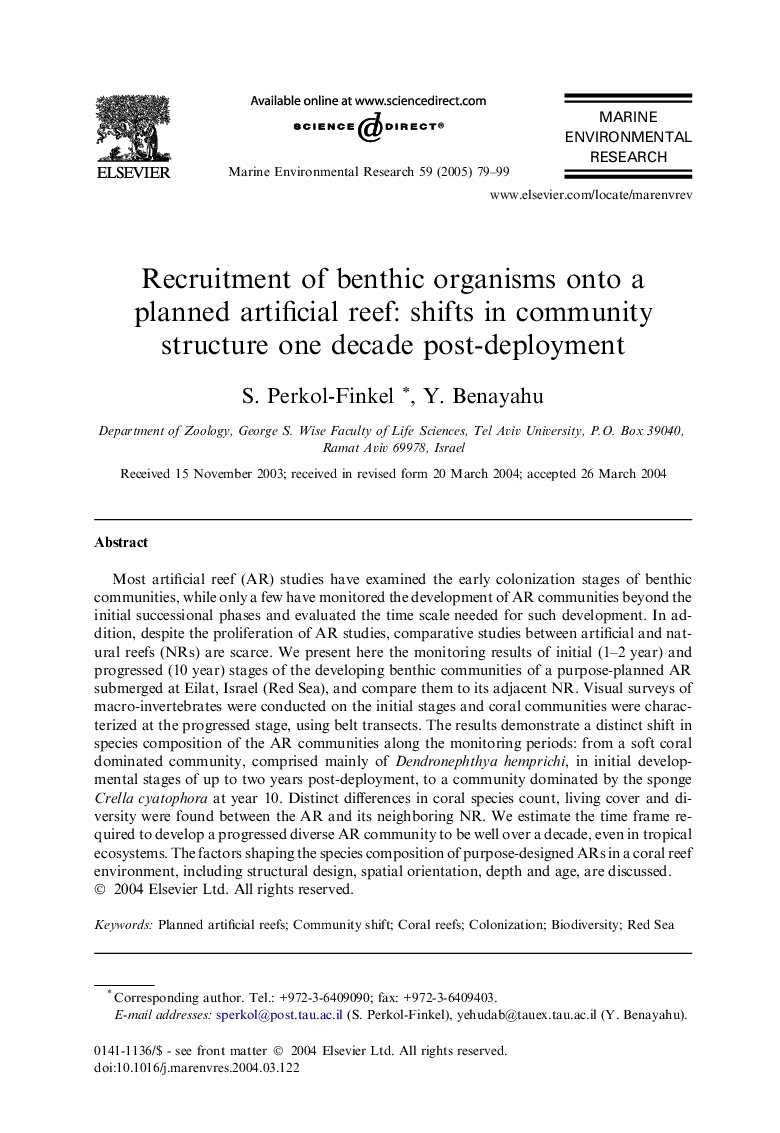| Article ID | Journal | Published Year | Pages | File Type |
|---|---|---|---|---|
| 9484440 | Marine Environmental Research | 2005 | 21 Pages |
Abstract
Most artificial reef (AR) studies have examined the early colonization stages of benthic communities, while only a few have monitored the development of AR communities beyond the initial successional phases and evaluated the time scale needed for such development. In addition, despite the proliferation of AR studies, comparative studies between artificial and natural reefs (NRs) are scarce. We present here the monitoring results of initial (1-2 year) and progressed (10 year) stages of the developing benthic communities of a purpose-planned AR submerged at Eilat, Israel (Red Sea), and compare them to its adjacent NR. Visual surveys of macro-invertebrates were conducted on the initial stages and coral communities were characterized at the progressed stage, using belt transects. The results demonstrate a distinct shift in species composition of the AR communities along the monitoring periods: from a soft coral dominated community, comprised mainly of Dendronephthya hemprichi, in initial developmental stages of up to two years post-deployment, to a community dominated by the sponge Crella cyatophora at year 10. Distinct differences in coral species count, living cover and diversity were found between the AR and its neighboring NR. We estimate the time frame required to develop a progressed diverse AR community to be well over a decade, even in tropical ecosystems. The factors shaping the species composition of purpose-designed ARs in a coral reef environment, including structural design, spatial orientation, depth and age, are discussed.
Related Topics
Physical Sciences and Engineering
Earth and Planetary Sciences
Oceanography
Authors
S. Perkol-Finkel, Y. Benayahu,
